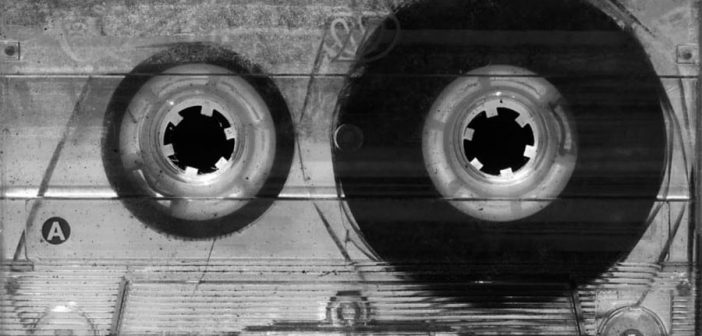Waiting is part of everyday life. We wait for dishes to be served at a restaurant, for products to be delivered to our homes, for web pages to load, and so on. But, in general, we don’t like waiting.
Companies know that (perceived) long wait times often lead to lowered consumer satisfaction, so they try to reduce waiting or make the time pass quickly and pleasantly. For example, a restaurant can offer self-service options to let their customers make orders themselves, which can reduce the wait time substantially. Alternately, firms can provide free Wi-Fi access to their customers to make the wait time at businesses more bearable. But sometimes wait times can’t be shortened, so companies would benefit from finding ways to make consumers more patient.
Previous research has pointed to numerous situational factors that can influence consumer patience. For example, one study showed how a lighter color (e.g., blue) may lead consumers to think that web pages load more quickly, and another study found that seeing a fast-food logo can make people value time efficiency and instant gratification in different situations. Yet there’s much to study about how emotions can affect patience. My work, which has largely focused on the effects of consumer emotions, led me to investigate the role of nostalgia, a sentimental longing for the past, on consumer patience.
Long wait times often lead to lowered consumer satisfaction.
In eight studies my colleagues and I recently conducted on U.S. and Asian participants (1,227 in total), we explored the role of nostalgia on consumers’ patience. We found that inducing feelings of nostalgia can help alleviate the negative effect of waiting — once consumers are made to feel nostalgia, they become more patient and feel that they’re not waiting as long.
For example, in one of the experiments we conducted, we approached patrons who had been waiting for 10–20 minutes to be seated at a restaurant. Ninety respondents who agreed to participate in a short survey were given a file folder containing a questionnaire on the right and a piece of gray paper on the left. For our nostalgia condition group, people saw the phrase “Nostalgia — Memories of our good old days” written in the middle of the gray paper, whereas in our control condition there was nothing on the paper. In the questionnaire, we asked patrons to estimate how many minutes they had been waiting to be seated. The results show that, on average, patrons who had been exposed to the nostalgia stimulus estimated that they had waited for 5.80 minutes, less than what those who had not been exposed to the phrase said (8.33 minutes).
In another experiment, we asked 80 undergraduate students to either recall a past event that they tend to feel nostalgic about (this was our nostalgia condition) or a typical day (our control condition). Afterward, we told participants that they could participate in a lucky draw lottery and could choose one of two rewards if they won. One reward was a payment of about $14 that could be collected immediately, and the other was a payment of about $22 that could only be collected one month later. The results showed that students who were asked to recall a nostalgic event were more likely to choose the larger, delayed reward (93%), reflecting a greater willingness to wait, than control participants were (65%).
We observed similar results across our other studies, using different measures of consumer patience, including people’s feelings of patience in waiting for a webpage to load and their preferences for expedited versus standard shipping methods. Nostalgic participants indicated that they felt more patient while waiting for a service and were also less likely to choose the expedited delivery method.
Why?
But why do feelings of nostalgia make consumers become more patient? We believe it is mainly driven by the unique experience of recalling a cherished event. Nostalgia is often induced by someone remembering a favorite experience that is unlikely to recur. Most nostalgic episodes comprise elements of love and joy and typically involve interactions between an individual and family members, friends, or romantic partners. Knowing that the positive experience won’t happen again motivates individuals to savor their memory of the experience and prolong their reminiscence. This, in turn, can lead someone to prolong other experiences that they encounter later, consequently increasing their tolerance for waiting in these situations.
There are alternative explanations for our findings. For example, perhaps people become more patient after feeling nostalgic because that makes them relaxed or puts them in a positive mood. However, we ruled out these explanations by including an “exciting nostalgia” group, in which participants were asked to recall an exciting event that made them feel nostalgic; we found a similar effect in this group.
Our findings suggest that when consumers incidentally feel nostalgic, they may become more patient in terms of waiting for a product or service. Marketers can therefore seek to decrease negative reactions that result from a long waiting time by trying to evoke nostalgia among customers whom they expect will have to wait for something.
For example, a restaurant with long lines of customers waiting may benefit by playing nostalgia-inducing background music. Similarly, a telecommunications company that takes a long time to deliver new models of cell phones may benefit from applying a nostalgic theme (e.g., using vintage design) in the promotion campaign in order to alleviate the negative outcomes of waiting. In sum, companies shouldn’t try to make customers wait for things, but because waiting is inevitable, they can at least try to minimize the negative effects.
–
This article first appeared in www.hbrascend.org
Seeking to build and grow your brand using the force of consumer insight, strategic foresight, creative disruption and technology prowess? Talk to us at +9714 3867728 or mail: info@groupisd.com or visit www.groupisd.com




